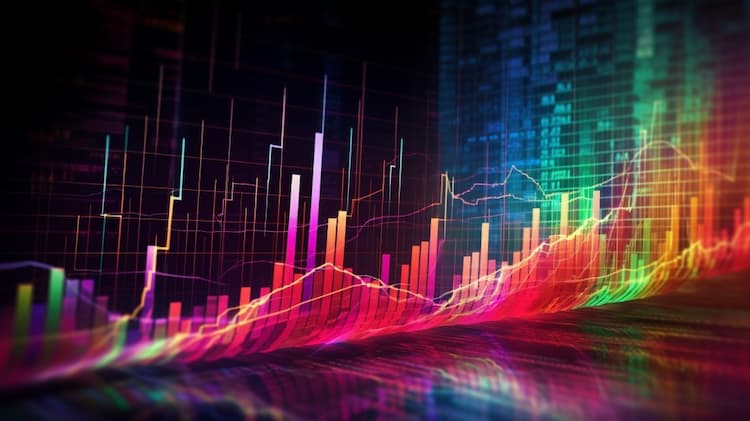
What are the best State Street ETFs?
State Street Global Advisors, the investment management division of State Street Corporation, offers a wide range of exchange-traded funds (ETFs) to investors. With a reputation for providing innovative and diversified investment options, State Street ETFs have become popular among both individual and institutional investors. In this article, we will explore some of the best State Street ETFs and compare them with similar ETFs in the market.
SPDR S&P 500 ETF (SPY)
The SPDR S&P 500 ETF (SPY) is one of State Street's flagship ETFs and is also one of the most popular ETFs overall. It tracks the performance of the S&P 500 index, which represents the performance of 500 large-cap U.S. stocks. SPY offers investors exposure to a broad range of sectors and is known for its low expense ratio and high liquidity. It is often considered a core holding for long-term investors seeking broad market exposure.
Comparing SPY with a similar ETF, the iShares Core S&P 500 ETF (IVV), we find that both funds track the same index. However, SPY has a slightly higher expense ratio than IVV. Additionally, SPY has a longer track record and a larger asset base, which may be appealing to investors who prioritize liquidity and stability.
SPDR Gold Shares ETF (GLD)
For investors looking to add exposure to gold in their portfolio, the SPDR Gold Shares ETF (GLD) is an attractive option. GLD is designed to track the price of gold bullion, providing investors with a convenient and cost-effective way to invest in the precious metal. As the largest physically backed gold ETF in the world, GLD offers investors a liquid and transparent vehicle for gaining exposure to gold.
A comparable ETF to consider is the iShares Gold Trust (IAU). Both GLD and IAU aim to track the price of gold, but there are some differences between them. GLD has a higher expense ratio and a larger asset base compared to IAU. Additionally, GLD trades at a higher price per share, which may be a consideration for some investors.
 State Street ETF,IVV,GLD,AGG overlap What are the best State Street ETFs?
State Street ETF,IVV,GLD,AGG overlap What are the best State Street ETFs?
SPDR Portfolio Aggregate Bond ETF (SPAB)
Fixed-income investors seeking broad exposure to the U.S. bond market can consider the SPDR Portfolio Aggregate Bond ETF (SPAB). SPAB aims to track the Bloomberg Barclays U.S. Aggregate Bond Index, which represents a wide range of investment-grade bonds. This ETF provides investors with diversified exposure across different sectors and maturities within the U.S. bond market.
Another ETF that offers similar exposure is the iShares Core U.S. Aggregate Bond ETF (AGG). AGG also tracks the Bloomberg Barclays U.S. Aggregate Bond Index and has a comparable expense ratio to SPAB. However, AGG has a larger asset base and may appeal to investors who prioritize liquidity and trading volume.
SPDR S&P Dividend ETF (SDY)
Investors seeking income and dividend-focused strategies may find the SPDR S&P Dividend ETF (SDY) appealing. SDY tracks the performance of the S&P High Yield Dividend Aristocrats Index, which includes companies that have a history of consistently increasing their dividends for at least 20 consecutive years. This ETF provides exposure to high-quality dividend-paying stocks across various sectors.
A comparable ETF in this space is the iShares Select Dividend ETF (DVY). Both SDY and DVY focus on dividend-paying stocks, but there are some differences. SDY has a higher expense ratio and a larger asset base compared to DVY. Additionally, the underlying indexes they track have slightly different methodologies for selecting dividend-paying stocks.
Conclusion
State Street offers a range of ETFs catering to different investment objectives and strategies. The SPDR S&P 500 ETF (SPY), SPDR Gold Shares ETF (GLD), SPDR Portfolio Aggregate Bond ETF (SPAB), and SPDR S&P Dividend ETF (SDY) are among the best State Street ETFs in their respective categories. Investors should consider their investment goals, risk tolerance, and preferences when choosing the most suitable ETFs for their portfolios.
Disclaimer: This article is for informational purposes only and does not constitute investment advice. It is not providing any investment advisory services. Investors should conduct their own research and consult with a financial advisor before making any investment decisions.
Sources:
State Street Global Advisors: https://www.ssga.com/
Investopedia article on SPY: https://www.investopedia.com/articles/exchangetradedfunds/08/spy-spdr-sp500.asp
Investopedia article on GLD: https://www.investopedia.com/articles/markets/081416/top-5-gold-etfs.asp
Investopedia article on AGG: https://www.investopedia.com/terms/a/agg.asp
Investopedia article on SDY: https://www.investopedia.com/terms/s/spyder.asp
FAQ
What are the best State Street ETFs?
The best State Street ETFs can vary depending on individual preferences and investment goals. However, here are six popular State Street ETFs worth considering:
What factors should I consider when evaluating State Street ETFs?
When evaluating State Street ETFs, consider factors such as expense ratios, tracking accuracy, liquidity, assets under management (AUM), the investment objective, the underlying index, and the historical performance of the ETF.
How do I choose the right State Street ETF for my investment goals?
To choose the right State Street ETF for your investment goals, consider factors such as your risk tolerance, desired exposure to specific asset classes or market segments, investment time horizon, and the overall market outlook for the particular investment strategy of the ETF.
Are there any specific risks associated with investing in State Street ETFs?
While State Street ETFs aim to provide market exposure and diversification, they are still subject to market risks. These risks include market volatility, economic conditions, geopolitical events, and fluctuations in the underlying assets of the ETF.
How can I research the performance of State Street ETFs?
You can research the performance of State Street ETFs by analyzing historical returns, comparing them to relevant benchmarks or indices, reviewing fund prospectuses and fact sheets provided by State Street, and considering ratings and analysis from reputable financial research providers.









